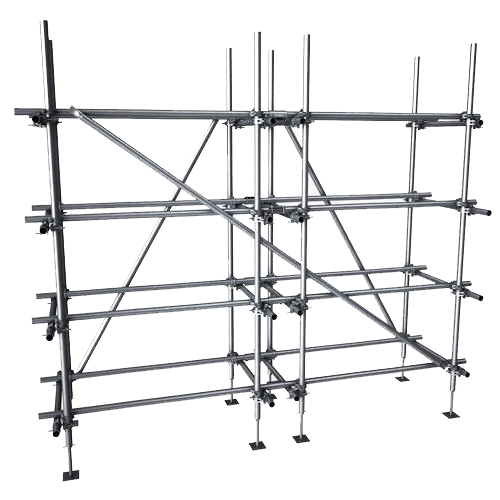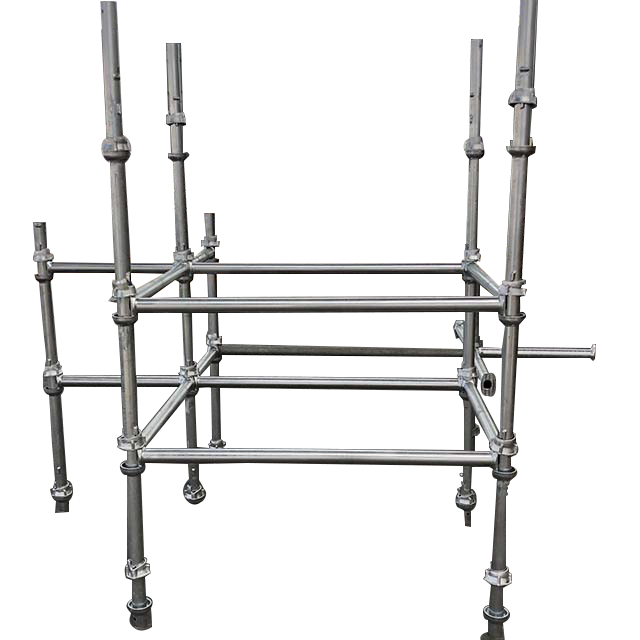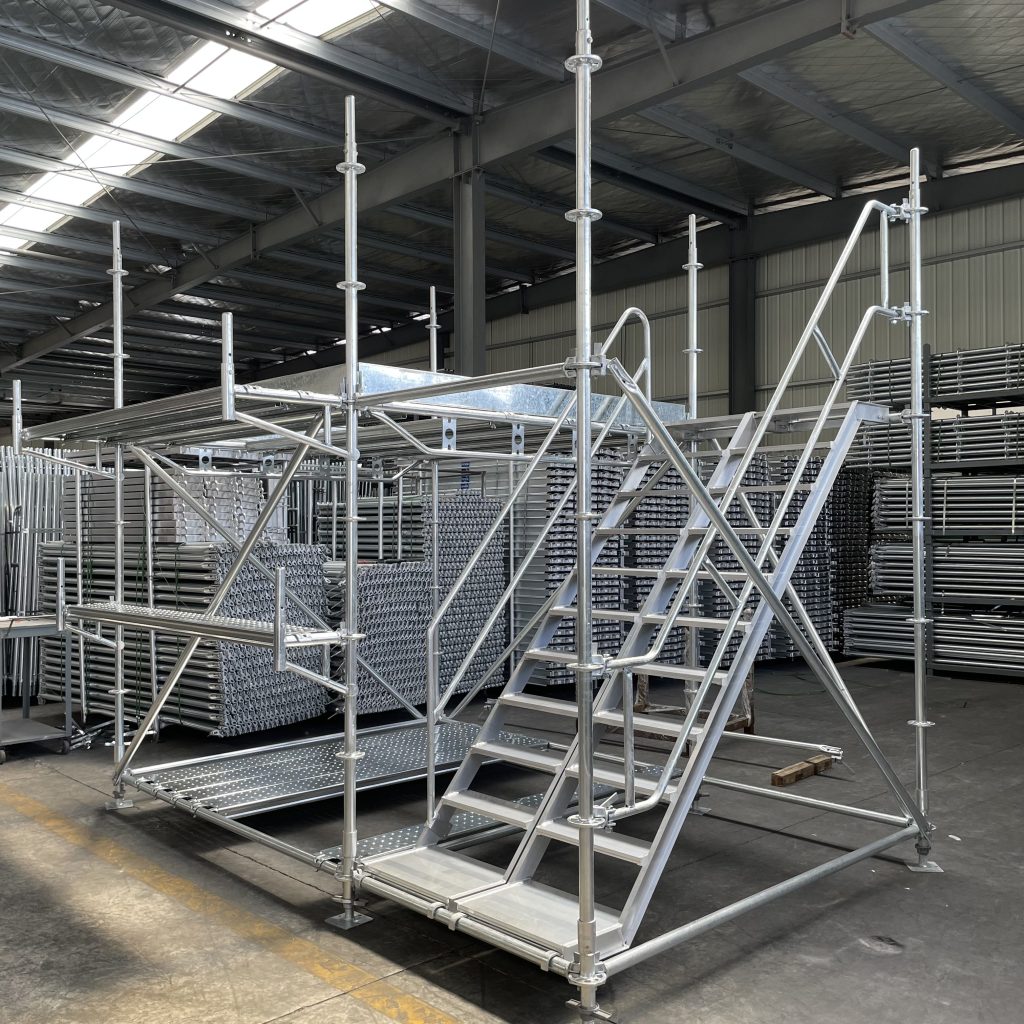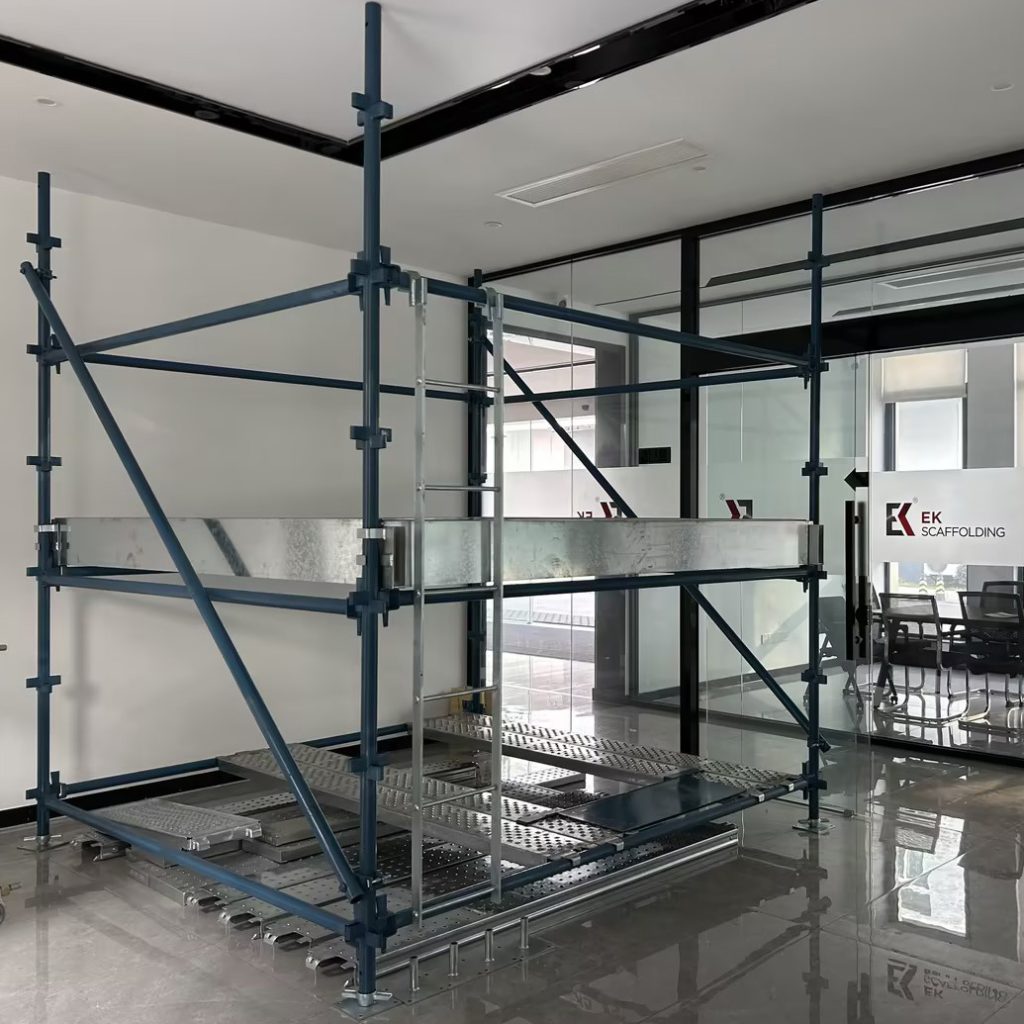Home » H Frame Scaffolding
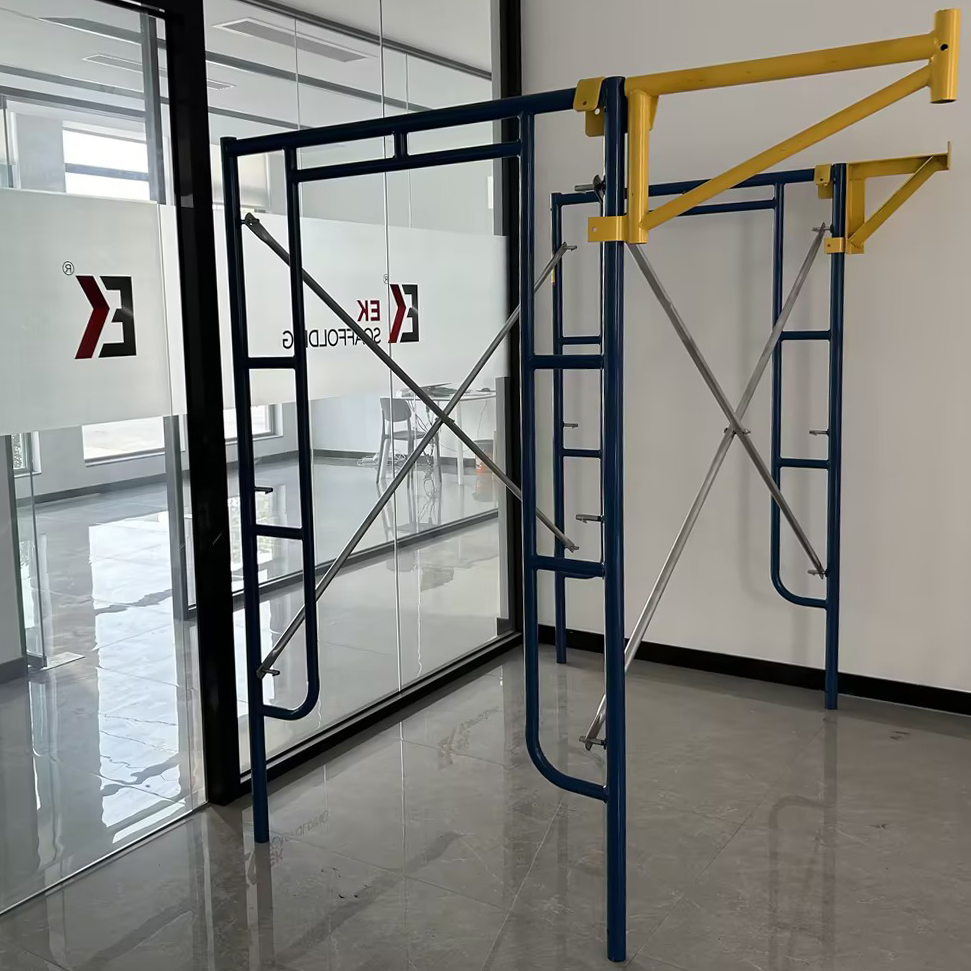
H Frame scaffolding
H Frame is a general style of Frame, also known as Mason Frame Scaffolding or Ladder Frame Scaffolding.
According to the diameter of the pipe wall of the raw material, it can be divided into two type frames, light-duty H Frame and Heavy-duty H frame scaffolding.
Tubes with diameters of ø 48mm, ø 57mm, or ø 60mm are heavy-duty frame, while tubes with diameters of ø 42 are light-duty gantry.
H frame finish can be made HDG, powder coated, pre-galvanized and painted.
As a professional H frame scaffolding manufacturer, EK will help you choose the right h-frame based on your project. And we will offer your best price.
Related Product
1.What Is H Frame Scaffolding
H Frame is a general style of Frame, also known as Mason Frame Scaffolding or Ladder Frame Scaffolding.
According to the diameter of the pipe wall of the raw materials used, it can be divided into 2 middle masts, light H masts and heavy H masts.
Pipes with diameters of Ø48mm, Ø57mm, and Ø60mm are heavy-duty Frame, while pipes with Ø42 are light-duty Frame.
The surface treatment of the H frame can be made into HDG, sprayed, pre-galvanized and painted.
H frame scaffolding is composed of vertical, horizontal and diagonal parts. H-frame scaffolding is a comfortable and reliable system. By establishing the stiffness of the connection, it can also resist buckling.
It also has safe areas where you can move goods safely. H frame scaffolding ensures that you save a lot of time and labour. At the same time, the H frame scaffolding needs to be used with other auxiliary parts.
Pins rising out of the corner poles of a section of frame scaffolding fit into recesses in the bottom of the corner poles of the section being stacked onto the lower section. Pin clips are placed through the connection to prevent the sections from coming apart. Boards or aluminium deck planks are placed across the completed frame scaffolding sections to give workers a place to stand while assembling the next section of scaffolding.
The bottom-most section of frame scaffolding is commonly set upon threaded stands that include large-winged adjustment nuts. The scaffolding is adjusted and levelled by turning these adjusting nuts until the desired lean or level is achieved.
The sections of frame scaffolding not only provide workers with a place to work from, but the sections also act as a ladder to allow workers a way to reach the desired working height. Ropes hung from the uppermost section of scaffolding provide a way for workers to hoist materials up to their working level.
Occasionally, when working with heavy materials such as concrete blocks, a power hoist will be employed to raise the materials. It is not uncommon to see workers performing duties from multiple levels of a scaffolding tower simultaneously.
The frame scaffolding is commonly brought to the worksite by truck. It is common for a construction supply or rental agency to provide structure for any job.
It is partially due to the tremendous amount of scaffolding sections, cross poles and locking pins required on any given job that would be too expensive for a single company to purchase for the occasional job that requires the use of scaffolding. The rental agency will deliver the frame scaffolding supplies to the job site. However, it is usually the job of the construction crew to assemble and tear down the scaffolding.
2.How To Build H Frame Scaffolding?

To ensure the safety of Frame scaffolding, every link and step in the Frame scaffolding process is critical. Therefore, it is necessary to strictly install the Frame scaffolding technical specifications for operation and the inspection work after the erection is completed.
The erection sequence and steps of portal scaffolding:
- Foundation treatment
1. To ensure that the foundation has sufficient bearing capacity, the frame’s construction should meet the requirements of the regulations and construction plan.
2. when the movable frame is erected on the structural floor or platform, a pad or cushion should be laid under the pole base Blocks, and perform force checking calculations on structures such as floors or overhangs.
3. The foundation of the work surface, such as the mast erection and the running track, must be compacted and must pour the ground with hardened mud, and the land must be flat.
- Frame scaffolding build procedure
1. The assembly of the frame: it should extend from the left end to the right end, erect step by step from bottom to top, and change the erection direction layer by layer to reduce the accumulation of errors. It cannot be erected from opposite ends or alternately to avoid dislocating the joints, which is difficult to connect.
2. The sequence of erection of the frame: spring door frame pole alignment → placement of the base → erect the frame from one end and then install the cross support → install the horizontal frame (or scaffold board) → install the horizontal reinforcement rod → follow the above steps, layer by layer Install upward → install the scissor support at the specified position → assemble the top step railing.
3. The erection of the frame must cooperate with the construction supervision, and the free height of a one-time erection is less than 6m to ensure the stability of the door frame.
4. The distance between the frames and the two rows of door frames is arranged longitudinally and their value.
- Precautions for the installation of frame and accessories
1. The settings of cross supports, horizontal frames, scaffolding boards, connecting rods, and locking arms should comply with the construction regulations.
2. Frames and accessories of different products shall not be mixed in the same scaffold.
3. Cross supports, horizontal frames, and scaffold boards should be installed immediately following the mainframe’s installation.
4. Each component’s lock arms and hooks must be in a locked state.
5. We should continuously set the horizontal frame or scaffold board in the same step and fully pave the scaffold board.
6. The position of the steel ladder should meet the requirements of the assembly layout drawing. The bottom steel ladder can span a two-step or three-step gantry before turning.
7. Toe boards (bars) should be installed on both sides of the scaffold construction layer.
3.H Frame Scaffolding Weight/Size/Dimension/Specification
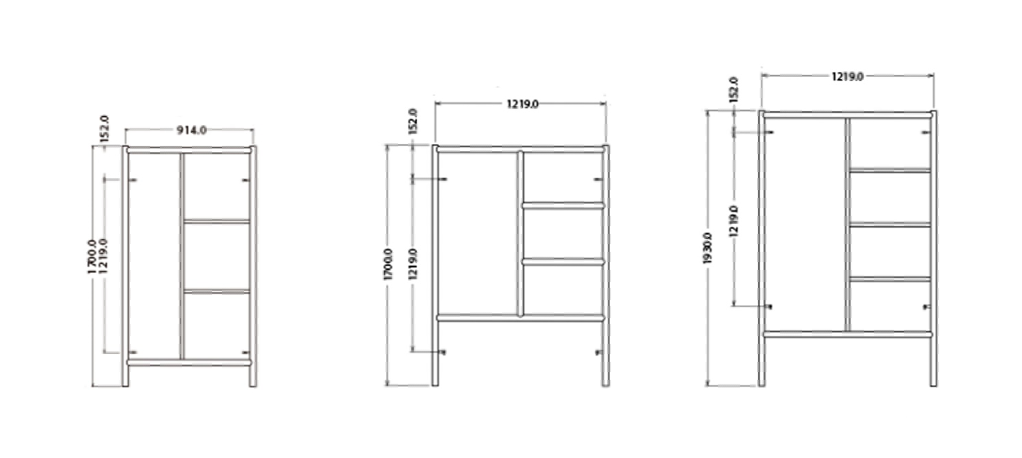
There are many different sizes and sizes of H Frames in the scaffold market, but EK scaffolding manufacturer always manufactures and produces H Frames according to the actual needs of our customers to solve any scaffold product problems of our customers.
Below are the H Frame’s regular weights for your reference:
The weight for Width: 1219mm/4′, Height: 1930mm/6’4″”, H Frame weight: 17.80kg/set. Tube size for A: Ø42.3*2.4mm; B: Ø25*1.5mm
The weight for Width: 1219mm/4′, Height: 1700mm/5’7″”, H Frame weight: 15.90kg/set. Tube size for A: Ø42.3*2.4mm; B: Ø25*1.5mm
The weight for Width: 1219mm/4′, Height: 1524mm/5′, H Frame weight: 14.50kg/set. Tube size for A: Ø42.3*2.4mm; B: Ø25*1.5mm
The weight for Width: 1219mm/4′, Height: 1219mm/4′, H Frame weight: 12.80kg/set. Tube size for A: Ø42.3*2.4mm; B: Ø25*1.5mm
The weight for Width: 1219mm/4′, Height: 914mm/3′, H Frame weight: 10.50kg/set. Tube size for A: Ø42.3*2.4mm; B: Ø25*1.5mm
The weight for Width: 914mm/5’7″”, Height: 1700mm/5’7″”, H Frame weight: 14.90kg/set. Tube size for A: Ø42.3*2.4mm; B: Ø25*1.5mm
Welcome to consult me about the size and price you need. One of EK’s strengths is to customize products according to customer needs.
EK can provide you with the most cost-effective H Frame in the Chinese market.
4.Frame Scaffolding Parts /Components
H Frame Scaffolding Systems Include Parts and Components of:
- Screw Jack Base
- Scissor Cross Braces
- Adjustable support
- Guard Rail Post
- Spigot Coupling Pins
- Guard Rails
- Metal Deck
- Catwalk Plank
- Scaffolding Access Stairs
5.Where To Use Frame Scaffolding
EK H Frame scaffolding can be easily used in the construction of different structures, such as:
1. It is used for supporting the main frame in the formwork system of buildings, halls, bridges, viaducts, tunnels, etc. or as a flying form supporting the main frame.
2. Used as a scaffolding for internal and external grids of high-rise buildings.
3. Active working platform for electromechanical installation, hull repair and other decoration projects.
4. Use portal scaffolding with simple roof trusses to form temporary site dormitories, warehouses or sheds.
5. Used to set up temporary viewing stands
6. Hydroelectric plant projects
7. In energy facilities

